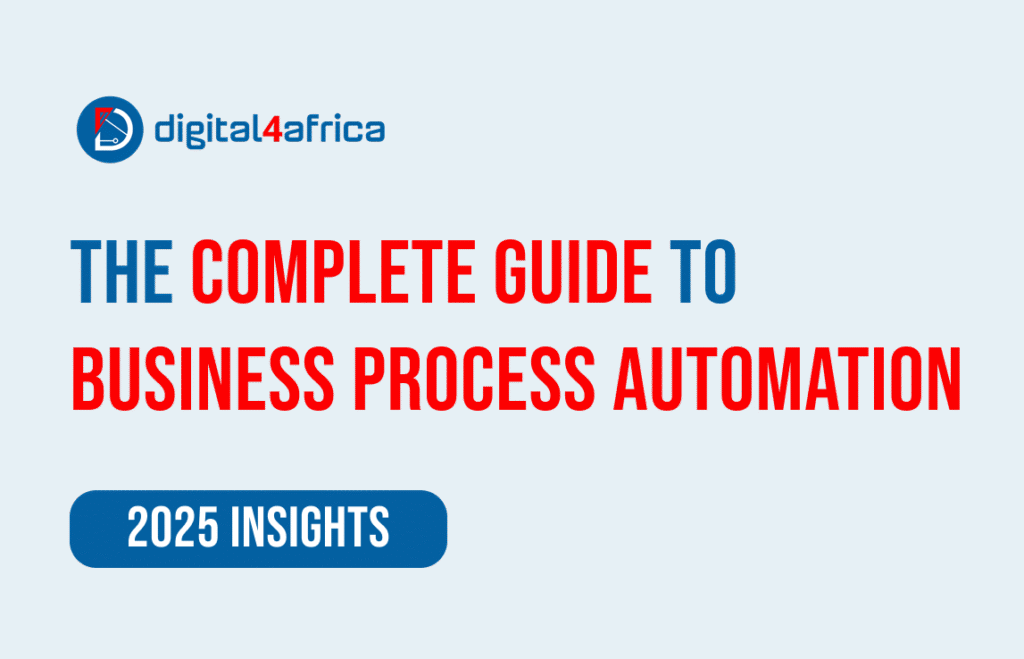The Complete Guide to Business Process Automation in 2025
In 2025, businesses face relentless pressure to do more with less. Manual processes—such as chasing invoices, updating spreadsheets, or responding to routine customer queries—eat up time and money. Business process automation (BPA) is your ticket to working smarter, not harder. BPA utilizes tools such as AI, robotic process automation (RPA), and low-code platforms to streamline workflows, save time, and boost productivity.
This guide isn’t a theoretical deep dive—it’s a practical roadmap for professionals and businesses eager to streamline operations, save costs, and stay ahead. Get ready to open some new tabs, because by the end of this, you’ll have a clear path to transforming your business operations. Let’s dive in!
What is Business Process Automation and Why Does it Matter in 2025
Business Process Automation (BPA) is the use of technology to automate and streamline business processes with minimal human intervention. A business process is a series of structured activities or tasks performed by people or systems to achieve a specific organizational goal, such as customer onboarding, order fulfillment, or recruitment.
Imagine cutting your invoicing time by 70% or responding to customer inquiries in seconds, not hours. Automation isn’t just for tech giants; it’s for your business, regardless of whether you’re a startup, SME, or enterprise. With tools more accessible and affordable than ever, 2025 is the year to act. Here’s how to get started.
Step 1: Identify Processes to Automate
The first step is identifying repetitive, time-consuming tasks. This is perhaps the most crucial first step. Don’t try to automate everything at once, and certainly don’t automate a broken process. Automating chaos just makes a mess faster. Focus on processes that are:
- Highly repetitive and high-volume: Tasks that are performed daily or weekly.
- Rule-based and predictable: Where decisions are clear, not subjective.
- Prone to human error: Consider tasks like manual data entry or calculations.
- Involve multiple handoffs: Where work passes through many people or departments, causing delays.
- Cause significant frustration: Processes that frustrate your employees or customers.
Here are some examples to consider:
- Finance: Automating invoice generation and payment reminders.
- Customer Support: Using chatbots to handle frequently asked questions.
- HR: Streamlining employee onboarding or payroll.
- Marketing: Scheduling social media posts or syncing leads between your CRM and email platform.
Action: Grab a notepad or use a tool like Trello. List 3-5 processes within your business that feel repetitive or are prone to human error. These are the processes you should consider automating.
Step 2: Map Your Workflow
Before you can effectively automate, you need a crystal-clear understanding of how the process currently works—including all its inefficiencies and manual touchpoints. This step involves visualizing your existing workflow.
- Choose one of the processes you identified in step one.
- Use tools like Lucidchart, Miro, or even a whiteboard to visualize each step. This ensures your automation covers every angle and avoids bottlenecks.
- Start mapping your chosen process.
- Begin with the trigger (e.g., “Customer submits inquiry”).
- Draw each step the process takes, indicating decision points (often represented by diamonds for “Yes/No” choices), and clearly noting who (or what system) is responsible for each step.
- Be brutally honest about where manual steps occur, where information gets stuck, and where errors typically creep in.
Action: Dedicate 10-15 minutes to map out your chosen process in one of these tools. Don’t strive for perfection; simply get the current flow down. You’ll be surprised by the inefficiencies you uncover.
Step 3: Choose the Right Tools
The good news? You don’t need to be a tech wizard to automate. Here are three beginner-friendly automation tools we at Digital 4 Africa recommend in 2025:
- Zapier (Freemium): Connects different apps and services to automate repetitive tasks, eliminating the need for manual data entry and streamlining workflows. For example, it can connects app like Gmail, Slack, and CRMs to automate workflows such as syncing new leads from a form to your CRM.
- UiPath (Freemium): A Robotic Process Automation (RPA) platform for automating repetitive tasks. It allows building workflows with Studio, running them via Robots, and managing deployments with Orchestrator.
- Jasper (Premium): An AI-powered content creation tool for marketers and writers. It can be used for generating blog posts, ads, emails, social media content, and more.
Action: Don’t sign up for everything. Pick one tool that seems most relevant, go to its website, explore its features, and understand its pricing. Start with free trials. Most tools offer them, so you can test what fits your needs.
Step 4: Start Small, Then Scale
Don’t try to automate everything at once. This is a common pitfall. Choose one process, implement it, and measure the results.
- Pick one or two high-impact processes as pilot projects.
- Prove the ROI: Clearly define what success looks like, for example, “reduce invoice processing time by 50%,” or “eliminate 90% of data entry errors”. Track these metrics closely.
- Build Confidence: Small, measurable wins build internal confidence and provide tangible proof for securing further support and buy-in across your organization.
- Learn and Refine: Pilot projects are learning opportunities. What worked? What didn’t? Make adjustments and refinements before scaling.
Once you see success, scale to other processes.
Action: Define clear, measurable KPIs for your first automation project. How will you know it’s a success? Set up one automation this week. Use a tool’s free trial and aim for a small win, like automating a daily report.
Step 5: Partner for Success
Automation can feel overwhelming, but you don’t have to do it alone. At Digital 4 Africa, we specialize in guiding businesses through every step—from identifying processes to selecting tools and measuring ROI. Our team ensures your automation aligns with your goals, whether you’re a small business or a growing enterprise.
Action: Book a free consultation with Digital 4 Africa to assess your automation needs. Visit our website to get started.
Common Pitfalls to Avoid
- Overcomplicating: Start simple—never automate a disorganized process without streamlining it first.
- Ignoring Staff: Train your team to use new tools to ensure adoption.
- Skipping Metrics: Always track time saved, error reduction, or cost savings to justify the investment.
What’s Next for Your Business?
By starting small, selecting the right tools, and partnering with experts like Digital 4 Africa, you can transform how your business operates. Imagine reclaiming hours each week, pleasing your customers, and focusing on growth rather than mundane tasks.
- Identify your three most repetitive tasks right now.
- Try out one automation tool that offers a free trial.
- Contact Digital 4 Africa for a consultation.
Let’s make 2025 the year your business operates smarter, not harder.
By Jennifer Mutuku, Content Marketer, Digital4Africa.


